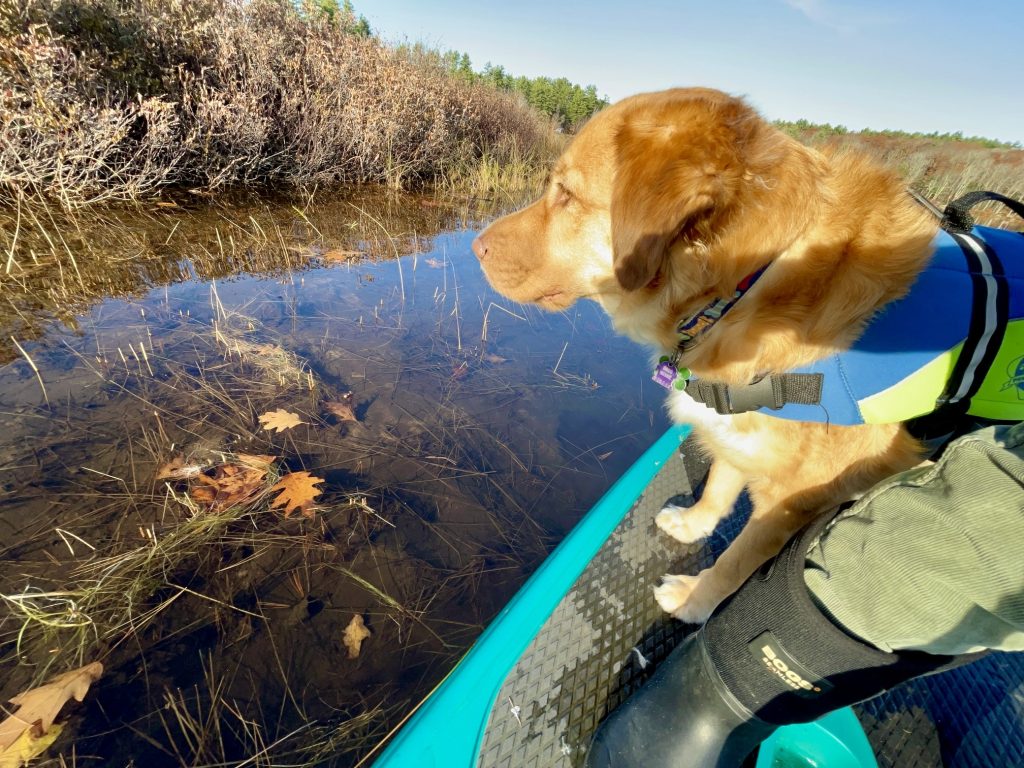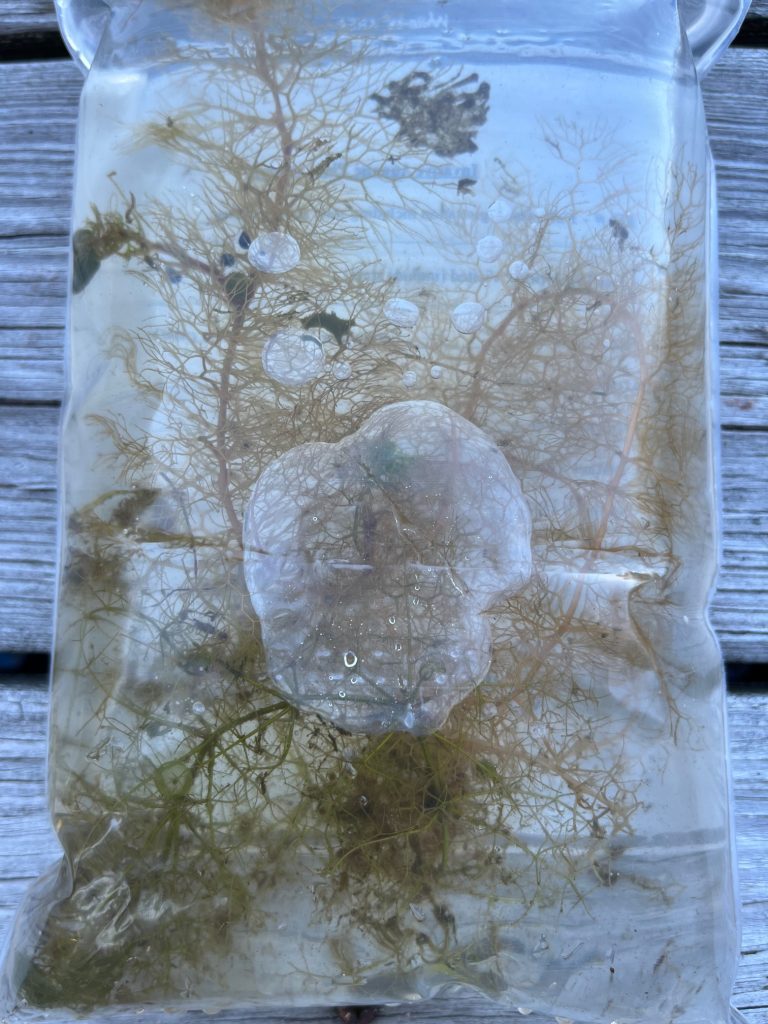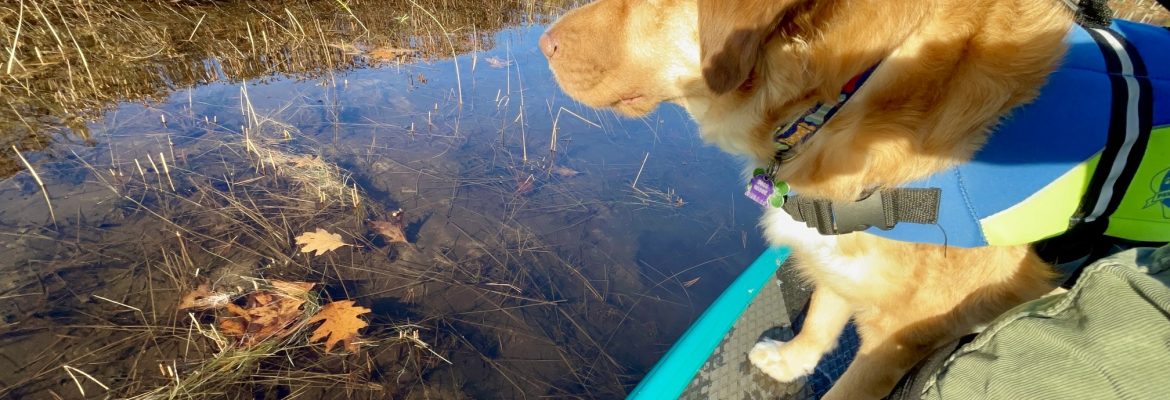Extra Protection for Moose Pond
by shawn hagerty – mpa board member
The MPA recently launched a new initiative to enhance our efforts to protect the lake we love from invasive plant and animal infestations. Called the Lake Section Captain Initiative, it allows for more coverage and more frequent examination of the lake.
Many readers may already know that a portion of their donations to the MPA are used to pay the Lakes Environmental Association (LEA) to conduct an annual survey of high traffic areas around Moose Pond. The hope is, should milfoil or other invasive species enter the lake, this survey will catch them. However, a once yearly survey limited to a very small percentage of the lake can only provide so much protection.

The Lake Section Captain Initiative divides the lake into 17 sections, assigning a “Lake Section Captain” to each zone. Over time, these volunteers will become familiar with the types of plants currently growing in their section, and will be able to quickly detect any changes, specifically the presence of any invasive species, so that we can take quick action to remove them before they spread unchecked. An infestation that is not quickly addressed could mean permanent, and costly, damage to our lake.
In October, I completed the survey of my section. I am, admittedly, not well versed in aquatic plant identification, so part of my preparation was to visit the LEA headquarters in Bridgton. The LEA team is extremely eager and happy to explain the differences between native milfoil and invasive milfoil. Believe it or not, Moose Pond does have harmless, native milfoil. All of the Lake Section Captains will be receiving LEA plant identification training in the spring of 2023.

The day after my visit to LEA’s offices, I started my initial survey by paddleboard (with help from my assistant, Buddy the dog!) while wearing polarized sunglasses so I could effectively see below the surface. Invasive milfoils grow in depths up to 15 feet; an alarming characteristic considering the many shallow areas of Moose Pond. During one of my surveys, I spotted 2 plants that looked unusual to me. The protocol for any concerning and/or suspect plant is to carefully remove a section (using a long handled grabbing tool is the easiest method), being mindful not to create any fragments that could potentially spread the plant; place the sample in a Ziploc bag filled with lake water; note the date, time, and location; and take the sample to LEA headquarters for identification. Fortunately, this find was a false alarm; the LEA instantly recognized both of my samples as Bladderwort! For this past year, my section seems all in order.
Preventing variable leaf milfoil and other invasive plants from entering our pond remains a top priority for the MPA. With that in mind, please – please – please continue to spread the word to friends, neighbors, and visitors who bring boats into our lake to be aware of the very real threat of invasive species. Our next line of defense is early detection to prevent an uncontrollable infestation. In addition to the Lake Section Captain initiative, we encourage everyone to “Adopt Your Shoreline” and contact the MPA if you see any plants or animals that look unusual. Thanks for reading this article – Buddy and I hope to see you on the water!

